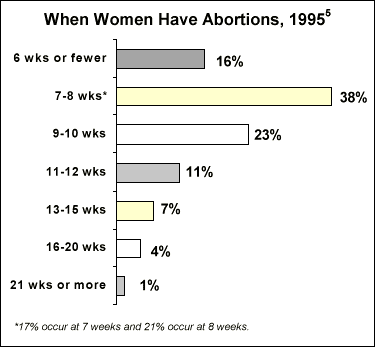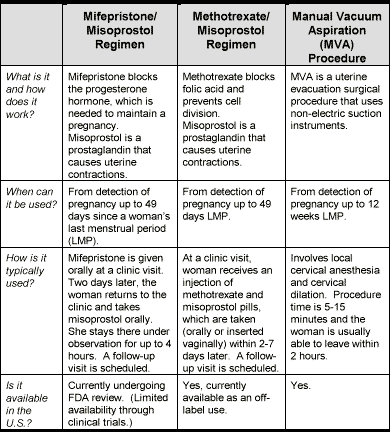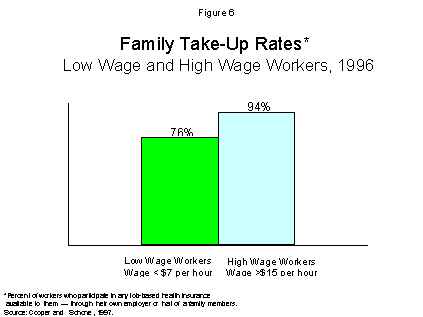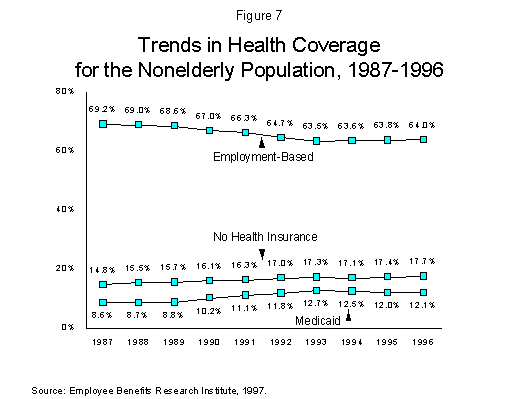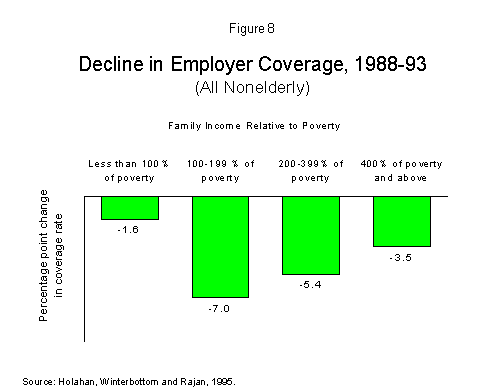Two National Surveys: Views of Americans and Health Care Providers on Medical Abortion
Will 1999 Be The Year For Mifepristone (RU-486)?And, An Update on Women’s Other Options for Very Early Abortion
September 16, 1998
Briefing Participants:
Janet Benshoof PresidentCenter for Reproductive Law & Policy120 Wall Street, 18th FloorNew York, NY 10005Press Contact: Margie Kelly212/514-5534
Jacqueline E. Darroch, PhDSenior Vice PresidentThe Alan Guttmacher Institute120 Wall StreetNew York, NY 10005
Vanessa Northington Gamble, MD, PhDAssociate ProfessorHistory of Medicine and Family Medicine, and DirectorCenter for the Study of Race and Ethnicity in MedicineUniversity of Wisconsin-Madison Medical School1300 University AvenueMadison, WI 53706-1532608/265-5996
Elizabeth Newhall, MDPartnerEverywoman’s Health, P.C., and Medical DirectorDowntown Women’s Center401 North Graham, #445Portland, OR 97227503/284-5220
Felicia H. Stewart, MDDirector of Reproductive Health ProgramsKaiser Family Foundation2400 Sand Hill RoadMenlo Park, CA 94025Press Contact: Tina Hoff,650/854-9400, ext. 210
Carolyn Westhoff, MD, MSAssociate Professor of Clinical Obstetrics and Gynecology and Public HealthNew York Presbyterian HospitalColumbia Presbyterian CampusColumbia University630 West 168th Street, Room 16-80New York, NY 10032Press Contact: Karin Eskenazi212/305-5587
Beverly Winikoff, MDSenior Medical AssociateThe Population CouncilOne Dag Hammarskjold PlazaNew York, NY 10017Press Contact: Sandra Waldman212/339-0525
Other Resources:
Mifepristone and Methotrexate Research
Mitchell D. Creinin, MDDirector of Family Planning & Family Planning ResearchDepartment of OB/GYN & Reproductive ScienceUniversity of Pittsburgh School of MedicineMagee-Women’s Hospital300 Halket StreetPittsburgh, PA 15213-3180412/641-1440
David Grimes, MDVice President of Biomedical AffairsFamily Health InternationalPO Box 13950Research Triangle Park, NC 27709-3950919/544-7040
Richard Hausknecht, MDMedical DirectorPlanned Parenthood of New York City208 East 72nd StreetNew York, NY 10021212/369-1116
Mifepristone Clinical Trials
Lawrence LaderPresidentAbortion Rights Mobilization51 Fifth Avenue, 10th FloorNew York, NY 10003212/255-0682
Eric Schaff, MDAssociate ProfessorDepartment of Family MedicineUniversity of Rochester885 South AvenueRochester, NY 14620716/442-7470
Methotrexate Clinical Trials
Michael Burnhill, MDVice President of Medical AffairsPlanned Parenthood Federation of America810 Seventh AvenueNew York, NY 10019-5818Press Contact: Steve Plever212/261-4310
Manual Vacuum Aspiration Research
Paul Blumenthal, MDAssociate ProfessorJHU Department of OB/GYNJohns Hopkins Bay View Medical Center4940 Eastern AvenueBaltimore, MD 21224410/550-0335
Forrest C. Greenslade, PhDPresidentIPASPO Box 100Carrboro, NC 27510919/967-7052
Patients’ Experiences With Medical Abortion
S. Marie Harvey, DrPHCo-DirectorPacific Institute for Women’s Health2999 Overland Avenue, Suite 111Los Angeles, CA 90064310/842-6828
Provider Training
Jodi MageeExecutive DirectorPhysicians for Reproductive Choice & Health1780 Broadway, 10th FloorNew York, NY 10019Press Contact: Ciara Wilson212/765-2322
Vicki SaportaExecutive DirectorNational Abortion Federation1755 Massachusetts, NW, Suite 600Washington, DC 20036Press Contact: Stephanie Mueller202/667-5881
Policy And Politics
Elizabeth CavendishLegal DirectorNational Abortion & Reproductive Rights Action League (NARAL)1156 15th Street, NW, Suite 700Washington, DC 20005202/973-3000
Marie BassProject DirectorReproductive Health Technologies Project1818 N Street, NW, Suite 450Washington, DC 20036202/530-2900
Will 1999 Be The Year For Mifepristone (RU-486)?
